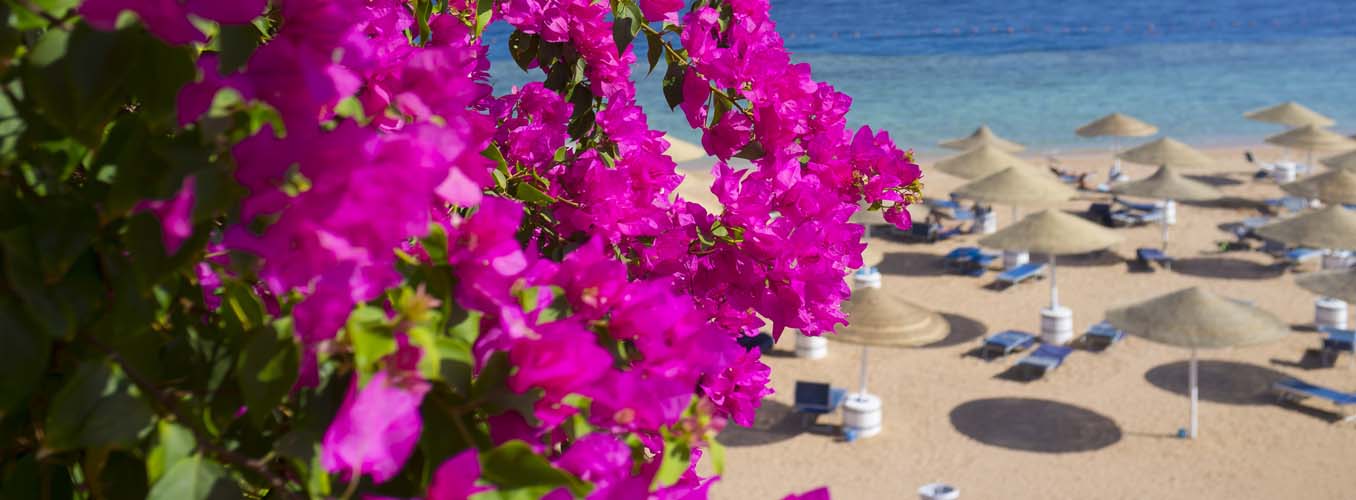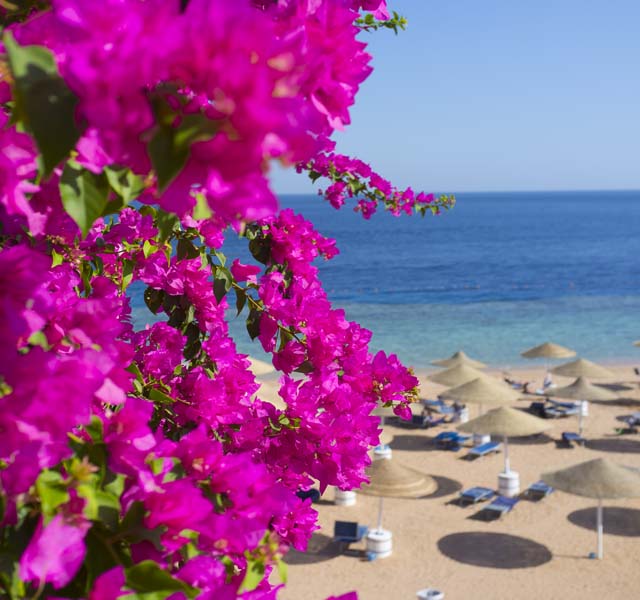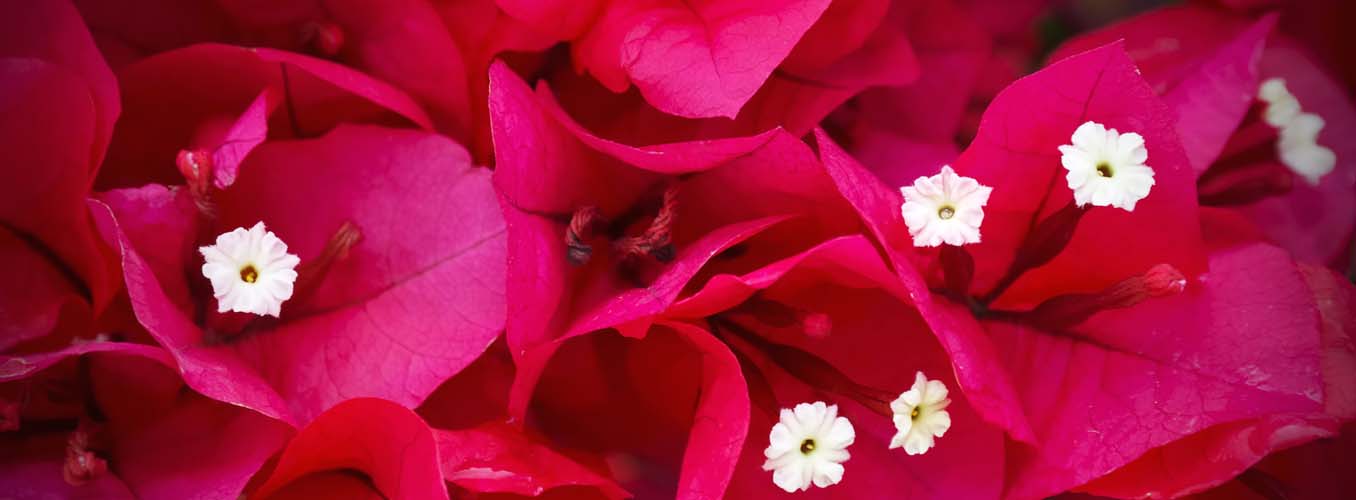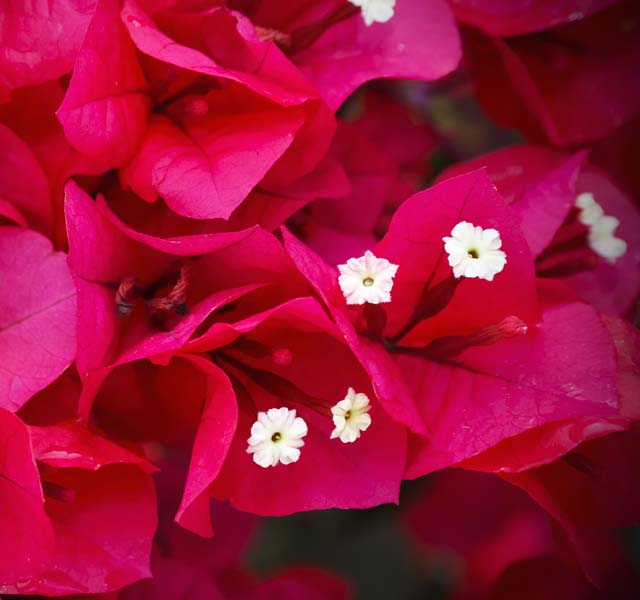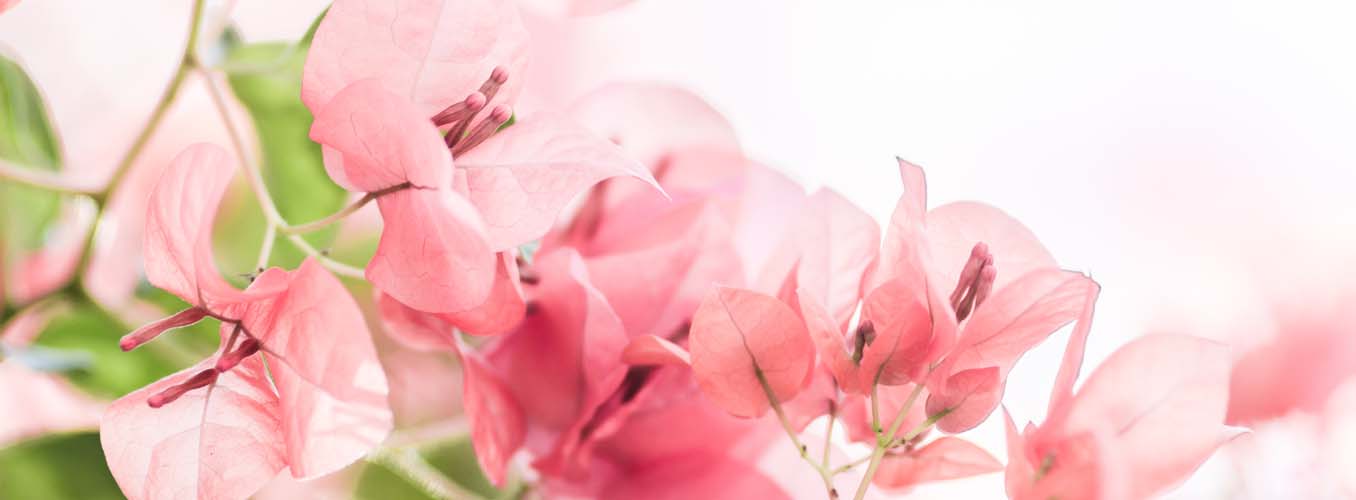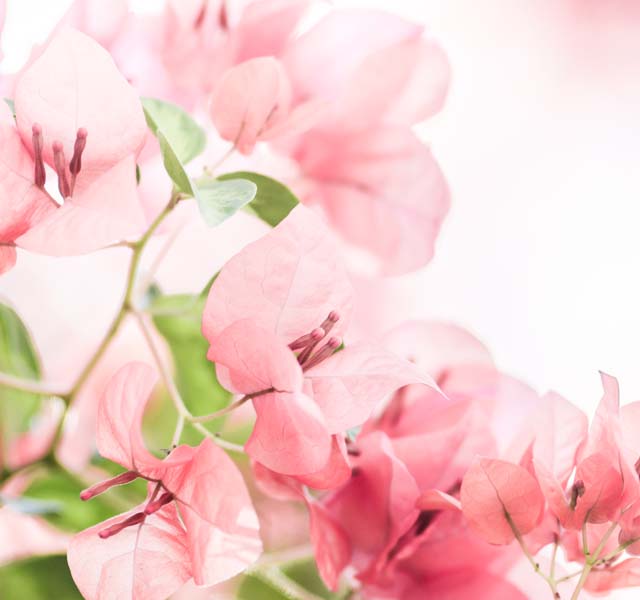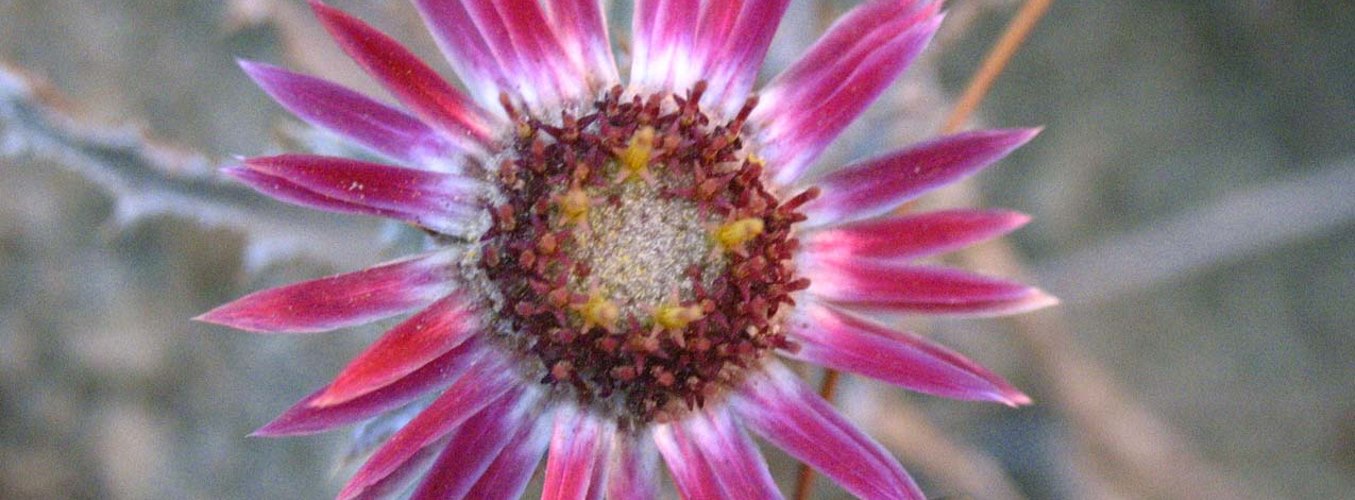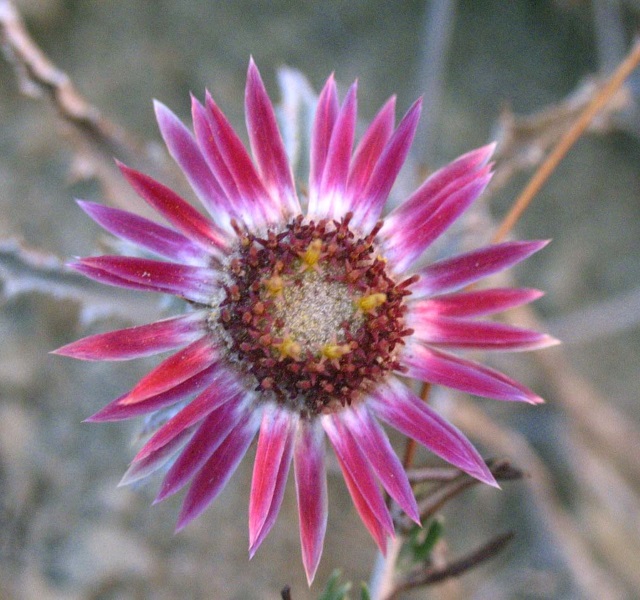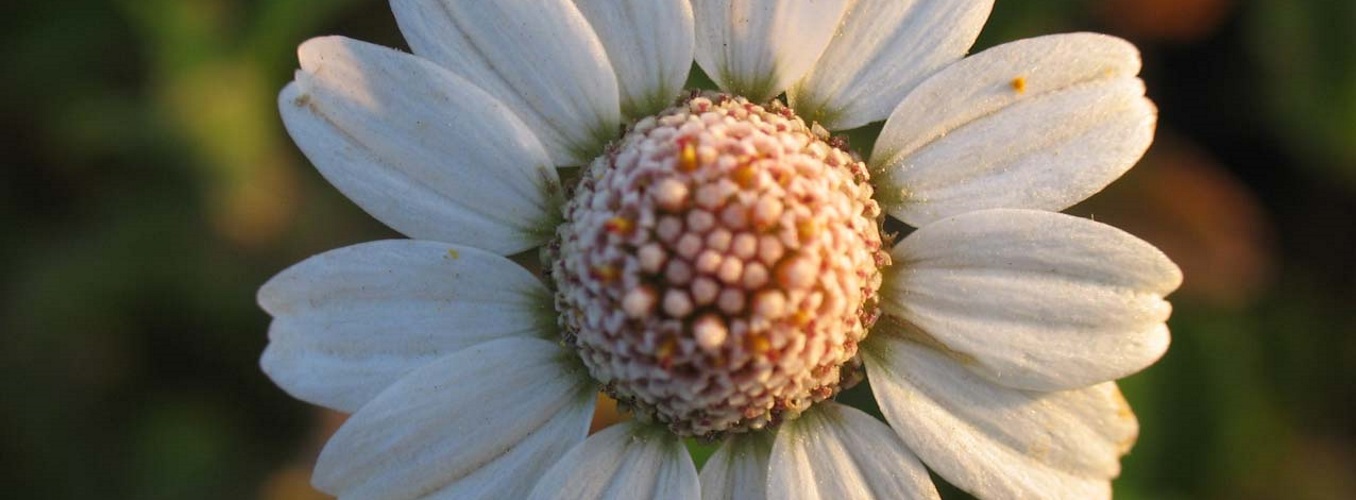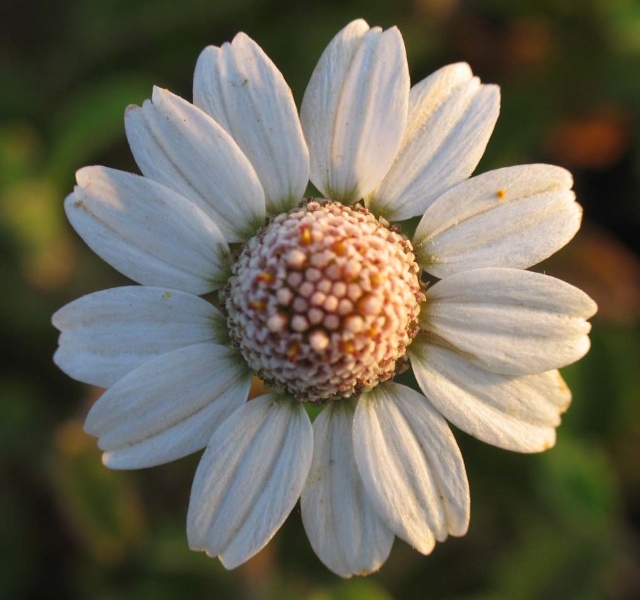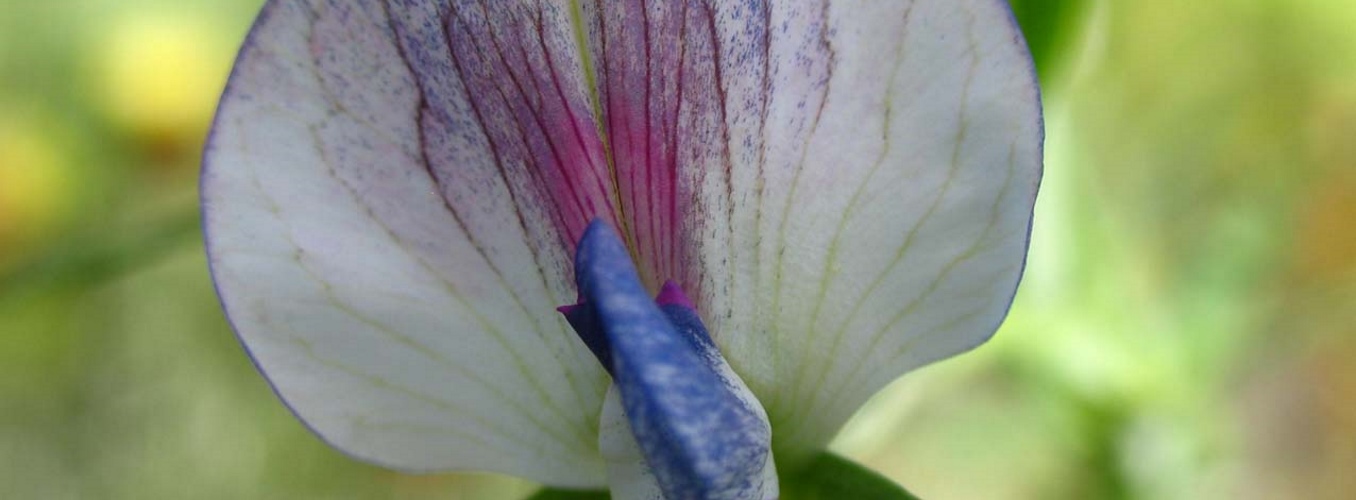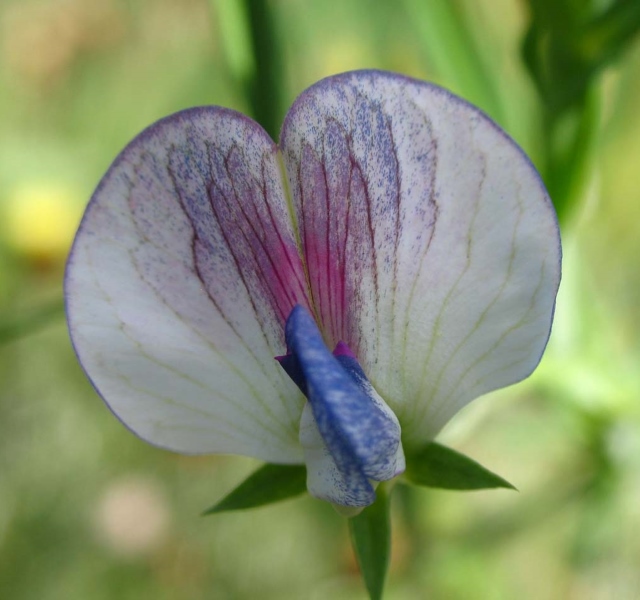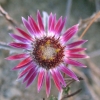Cyprus experiences a typical Mediterranean climate, extremely dry summers with rainfall occurring only in the winter months when the landscape comes alive again. After the long summer drought when the island is bleached of colour, arid and dry it is amazing to watch the transformation after the first rains fall in October/November. Suddenly, almost overnight, the ground is covered with a fuzz of new green grass and the early winter flowers - the autumn squill, Scilla autumnalis, Narcissus serotinus, Muscari etc.
In the spring months there is much to see for the keen botanist and it is an ideal time to visit the island when one can enjoy a holiday combining both history, flowers and the opportunity to walk. From December through to the end of May there is continual floral interest peaking in March and April when all the rock roses are in flower. In January there are carpets of anemones, Anenome coronara, a mixture of delicate pastel shades of pinks and blues followed later by golden yellow and creamy-white ranunculus, Ranunculus asiaticus. Throughout the spring a large number of different wild orchids can be seen. In March and April the mountain forest floor is covered with a pink haze of Anatolian orchids, Orchis anatolica. There are up to 30 species of orchid in North Cyprus including the spectacular endemic Cyprus bee orchid Ophrys kotschyi.
The whole of Cyprus boasts approximately 130 endemic species, 19 of which only grow in the North including the Hilarion cabbage! Brassica hilarionus has a very limited distribution but can be seen at St. Hilarion castle, hence its name. ?Higher up in the forest growing amongst the indigenous Calabrian pine trees is the eastern strawberry tree, Arbutus andrachne, with it’s strikingly smooth, red bark. In the cornfields in March/April deep crimson swathes of the Gladiolus italica, with bulbs deep enough to survive ploughing, grow amongst the barley and wheat. A common sight everywhere in spring are the huge stands of Giant Fennel, ferula communis, which form a canopy over waste ground at Salamis where the white marble colums of antiquity rise up out of a blaze of yellow crown daisies, Chrysanthemum coronarium.
The black tulip, Tulipa cypria – endemic - can be found in specific locations. The tiny Barbary nut, Gynandriris sisyrhincium, a wild iris (its blue flowers only open in the afternoon) can be seen from Feb to April in fields, waste ground etc. and also on the rooftops at Kyrenia Castle where it comes up together with the Star of Bethlehem, Ornithogallum pedicellare . Clinging impossibly on the walls of the Crusader Castles great clumps of golden henbane dangle and on the ground in many places, most striking, one can see the extraordinary cabbage-like leaves of the mandrake, Mandragora officinarum, subject of many a myth and legend, with a dense cluster of purple flowers in the centre.
At Kantara
there is a profusion of wild cyclamen, Cyclamen persicum. The Cyprus sanfoin Onobrychis venosa – an endemic – with stunningly
marked leaves, can be found found growing on dry verges and in beach
habitats. In late August/early September
the beautiful white beach lily, (Pancratium
maritimum, fragrant in the evenings, can be seen on the sandy shores of undeveloped
beaches.



